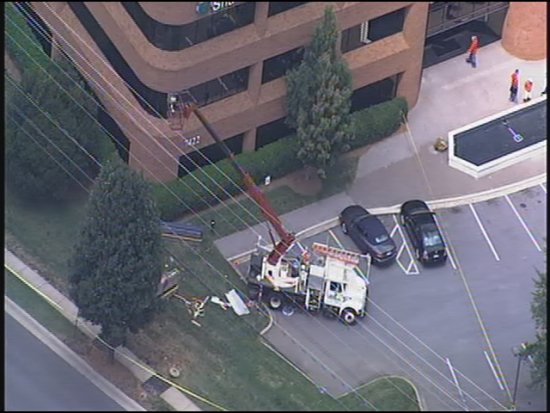The average, sustained attention span is 15 to 20 minutes. That is, when you say you’re concentrating, you probably do so for this long. After 20 minutes or so, you either choose to re-focus on the same task, take a break or, failing to do either, probably find your attention wandering.
Public speakers combat this by discussing important points in the first few minutes of a lecture, and using anecdotes and demonstrations to give dozing audiences a break. Web writers draft content in short chunks, which allow readers to flit between different headlines. On the job, mandatory breaks purportedly prevent employee burnout and errors.
Wayward attention can happen anytime, so take the following stories with a grain of compassion for the terrible results of abandoned attention spans.
This past July, in North Carolina, a sign-company employee was critically injured after he struck high-tension power lines with the basket of the utility truck he was operating during a routine sign installation. News helicopters captured the aftermath; apparently, no one was in the basket when it struck the lines.
Duke Energy shut off power to an estimated 2,800 customers for nearly three hours because of the accident. The operator sustained severe burns and was critically injured; the North Carolina Department of Labor is investigating.
Vertikal.net, a website for trade publications about cranes and lifting equipment, noted, “One assumes that operators of this type of equipment and application, where power lines are a constant concern, are well trained and aware of the risks . . . a long boom crane was totally inappropriate for this job.”
Advertisement
In New York, a sign company was fined more than $40,000 for allegedly violating six safety standards that involved cranes. OSHA inspectors noted a lack of guardrails on scaffolding, employees working without hard hats or fall protection, and improper outrigger settings. Six counts included fines for repeat violations.
Does that count as a sustained lack of attention? But it happens.
Avoiding Electrocution
Aside from operator error, everyday carelessness, and even bosses who shrug off safety regulations and demand employees conduct installations unsafely, revised OSHA regulations and trucking emissions standards will influence how cranes are purchased and operated.
As of August 9, 2010, OSHA Standard 1926.550 has been “redesignated” 1926.1501, but much remains the same, which yields a standard “to-do” list for signshops:
- Inspect hoisting machinery annually; document your findings by date.
- Keep a 10-ft. clearance between lines and any part of your crane or load on 50-kV lines, plus a 0.4-in. clearance for each kilovolt over 50 kV.
- Figure clearance needed with the formula 10 +
- .4(x-50), where x is the total line rating.
- In transit, keep the boom lowered, and maintain these clearances: 4 ft. for lines up to 50 kV, 10 ft. for 50-kV to 345-kV lines, and 16 ft. for lines up to 750 kV.
- Designate one person, other than the operator, to check for clearance.
OSHA’s website has the entire code and hundreds of pages that explain revisions, including this exception to the list above: “…except where electrical distribution and transmission lines have been deenergized and visibly grounded at point of work or where insulating barriers…have been erected to prevent physical contact with the lines.”
Our advice? Be as careful around deenergized lines as you are around live power lines. Make caution part of your normal procedure. Deadly crane accidents are still too common in the signage industry, and it doesn’t always take a dumb person to make a dumb mistake.
Advertisement



 Paula Fargo2 weeks ago
Paula Fargo2 weeks ago
 Real Deal1 week ago
Real Deal1 week ago
 Photo Gallery2 weeks ago
Photo Gallery2 weeks ago
 Projects1 week ago
Projects1 week ago
 News1 day ago
News1 day ago
 Business Management1 week ago
Business Management1 week ago
 Projects17 hours ago
Projects17 hours ago
 News1 week ago
News1 week ago









